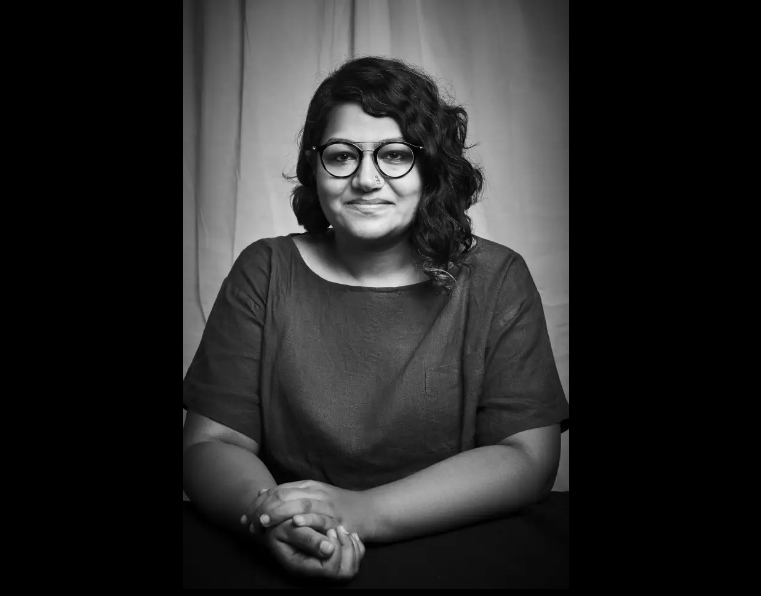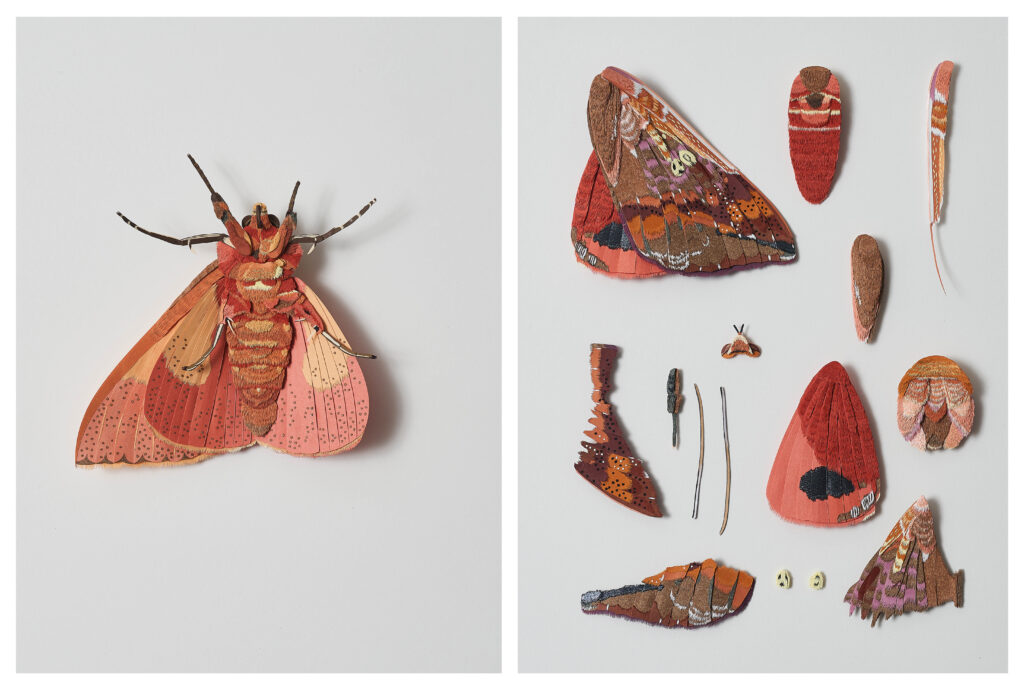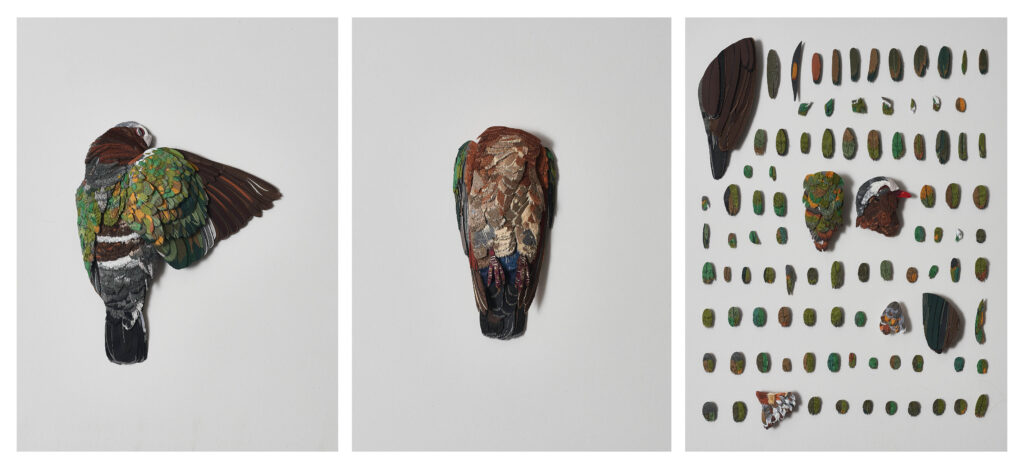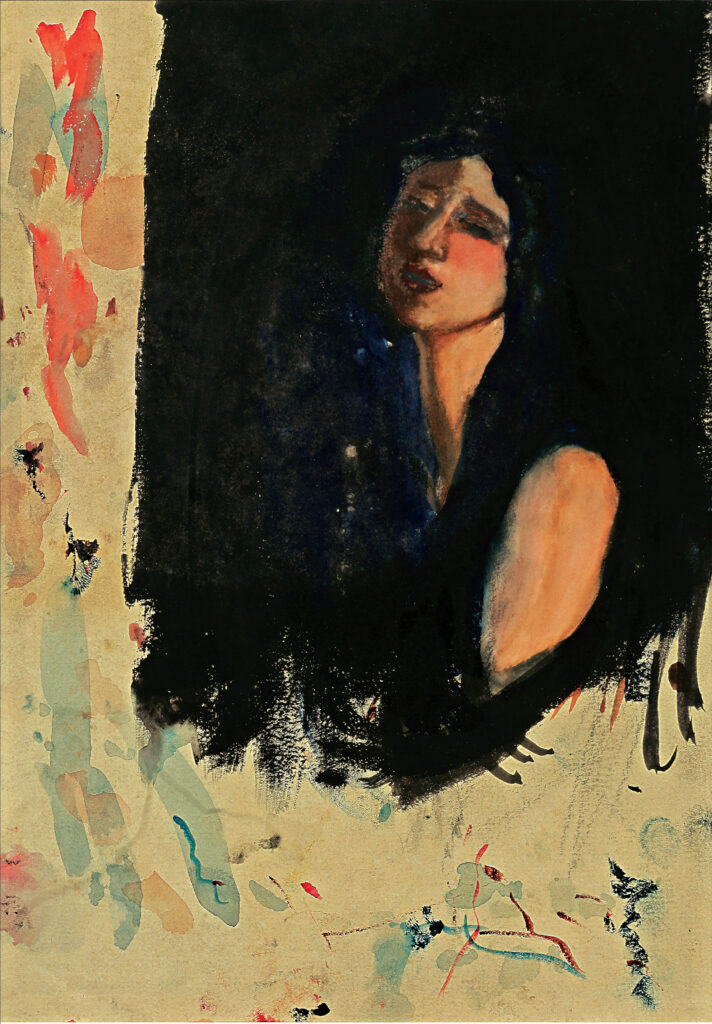
About Anatomize Nibha Sikander’s artworks showcasing detailed representations of moths and birds are the artist’s attempt at a pointed confrontation of the violence we have exerted upon other species of our planet.
In Anatomize, Sikander draws from a desire to elevate the level of deconstruction and abstraction that she had showcased in her last series, Wandering Violin Mantis. Moving away from anatomically accurate replicas of moths, the artist has made one major change in her work, by enlarging their forms. This allows her to study and analyse them in greater detail. Her arrangement of these details is influenced by the specimen-like presentation of taxidermy in museums. However, in this series Sikander’s methodical layout of the fragments of the species depicted appears closer to an imaginary script solidifying her position at the intersection of science, craft, and art.

As described by curator Roobina Karode, Sikander’s works “are manifestations of the artist’s entomological interest that seeks not to dissect, but to deconstruct the received notions of natural history.” Working exclusively with paper Sikander succeeds in creating a world that invites the viewer in closer, almost as if through a magnifying glass. According to her, paper mimics nature in its versatility – soft, stiff, malleable and flexible, almost like wings, feathers and antennae – allowing her to mould it to her will.
About the Artist
Nibha Sikander earned her Bachelors (2006) and Masters (2008) in Visual Arts from the Maharaja Sayajirao University, Vadodara.
In 2019, Nibha had her first solo exhibition, Wandering Violin Mantis at TARQ. Since her graduation, she has been part of several group exhibitions, some of which include The Inner Life of Things: Around Anatomies and Armatures at the Kiran Nadar Museum of Art, Noida (2022); ALCHEMY: Explorations in Indigo, Kasturbhai Lalbhai
Museum, Ahmedabad (2019); Beyond Borders, curated by the CONA Foundation at the Whitworth Gallery/Museum, Manchester, England (2017-18); A New Space, Nazar Art Gallery, Vadodara (2016); Back to College, VADFEST, Faculty of Fine Arts, Vadodara (2015); A Construal of Mourning and Rage, Emami Chisel Art, Kolkata (2014); Group show at Studio X, as part of the Paradise Lodge International Artist Residency, Mumbai (2013); Beauty and the Beast, Matthieu Foss Gallery, curated by Anne Maniglier, Mumbai, (2011); Show Girls!, Strand Art Room Gallery, curated by Anne Maniglier, Mumbai (2009); From our Cabinets to the Museum, Open Eyed Dreams Gallery, curated by Aparna Roy, Kochi (2009); and Class of 2008, Art Konsult Gallery, curated by Bhavna Khakkar, New Delhi (2008-09).
Museum, Ahmedabad (2019); Beyond Borders, curated by the CONA Foundation at the Whitworth Gallery/Museum, Manchester, England (2017-18); A New Space, Nazar Art Gallery, Vadodara (2016); Back to College, VADFEST, Faculty of Fine Arts, Vadodara (2015); A Construal of Mourning and Rage, Emami Chisel Art, Kolkata (2014); Group show at Studio X, as part of the Paradise Lodge International Artist Residency, Mumbai (2013); Beauty and the Beast, Matthieu Foss Gallery, curated by Anne Maniglier, Mumbai, (2011); Show Girls!, Strand Art Room Gallery, curated by Anne Maniglier, Mumbai (2009); From our Cabinets to the Museum, Open Eyed Dreams Gallery, curated by Aparna Roy, Kochi (2009); and Class of 2008, Art Konsult Gallery, curated by Bhavna Khakkar, New Delhi (2008-09).

She has taken part in residencies like Paradise Lodge International Artist Residency, Lonavala, Mumbai (November 2013); Sandarbh International Artists Residency Programme, Jaipur (November 2012); and Residency at the American School of Bombay, Mumbai (March – May 2010).
She is the recipient of the Nasreen Mohamedi Scholarship, Maharaja Sayajirao University, Vadodara, 2004-2005. She recently participated in India Art Fair 2020 in Delhi. Nibha currently works and lives in Murud-Janjira and Mumbai
About TARQ
TARQ was founded in 2014 by Hena Kapadia on the values of creating a meaningful conversation around art and its myriad connotations and contexts. It was envisioned as somet hing of a laboratory – an incubator for young contemporary artists which would work towards pushing the boundaries of how contemporary art in India is exhibited and perceived. TARQ’s youthful and experimental ethos encourages collectors, novice and seasoned alike, to approach art collecting through a perspective that marries thoughtfulness with an inquisitive eye for aesthetics and artistic processes.
Since its conception, TARQ has endeavoured to create a robust outreach program that ties in with the gallery’s exhibitions and overall raison d’être. The program is an amalgam of educational initiatives in the form of workshops, gallery walk-throughs and talks. Our intention is to engage with a diverse audience to develop an informed viewership for contemporary art in the future
TARQ
KK (Navsari) Chambers, Ground Floor, 39B AK Nayak Marg, Fort, Mumbai 400001, 022-66150424
Tuesday – Saturday: 11:00am – 6:30pm



